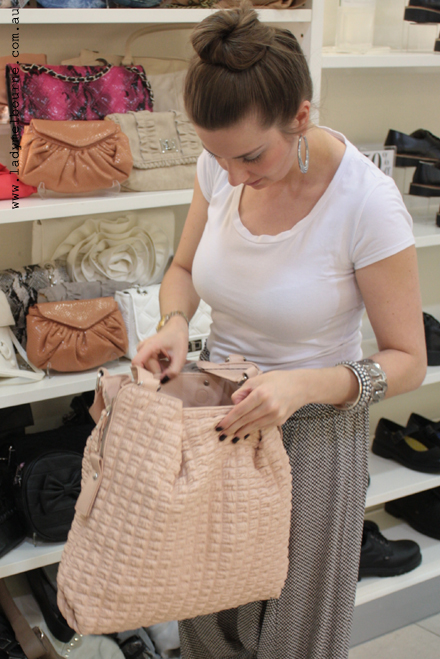Let's set aside the well-known debates over cultural and political appropriation, because they've been rehearsed so many times before when it comes to hip-hop apparel, bindis, dreadlocks, Thai fisherman pants and any number of other 'ethnicised' forms of clothing.Clearly these debates have not been rehearsed often enough. It seems weird to me now that I could have considered this terrain well mapped, because the fashion industry continues to deploy imagery and 'inspiration' that quite startlingly disavows any politics whatsoever.
But of course, we live in a culture in which people who draw attention or object to racist cultural moments are routinely accused of being 'politically correct', 'over-sensitive' or 'reading too much into things'. Maybe we do need to point this shit out, even if the points we are making seem obvious.
I don't make a habit of tracking this stuff; for all your erudition needs on the politics of fashion, I heartily recommend Threadbared and Fashion For Writers. However, here are several pretty basic observations I would like to make:
1. It's not okay to participate in other countries' racist traditions

Dotti window display: demonstrate your individuality by thoughtlessly replicating racist imagery.
When KFC aired its notorious "fried chicken at the cricket" ad, the company was shocked that American commentators would be upset at the suggestion that it's "too easy" to quieten down rowdy black people by offering them buckets of fried chicken.
The company's view was that the ad was never intended to be seen in the US; that in Australia, black people/fried chicken doesn't have the same racist connotation. "The ad was reproduced online in the US without KFC's permission, where we are told a culturally based stereotype exists, leading to the incorrect assertion of racism," said a KFC statement.
"We are told"! Pshaw! Such a statement betrays the attitude that cultures other than our own are fundamentally unknowable to us, and hence we can elude accusations of racism by saying it's not our racism; it's another culture's! We didn't know! To us, it's funny, or glamorous! Go tell them about racism!
Today, via Cate Lawrence, I came across this blog post about cultural appropriation, which made me remember my horror at the Dotti shop window. It was also quite eye-opening to see the resentment that ordinary consumers felt at being implicated in racist fashion practices. Some people quoted in Julia's post seemed to feel badgered by the 'PC police', or having their innocent consumer choices unfairly tainted with the racist brush.
In Australia, appropriations of American racism have been excused as harmless humour and spectacle, because "we don't have the cultural context to interpret them as racist". There might be an outcry if national chain store Dotti used cartoonish Australian indigenous imagery, but since we don't have Native Americans, it's okay to dress up as them.
Now that is just bullshit.
2. 'Nude' is not a colour

"I'm sorry Barack, you don't have X-ray vision."
I can't remember where I first read about Michelle Obama's 'nude' dress, but I was reminded about it on the weekend because Sushi Das wrote about it in The Age's A2 section, months after everyone else.
Personally I don't use the term 'nude' to describe those pale, insipid colours that so many Hollywood stars seem to find flattering on the red carpet. But the Obama incident did make me recognise that I do subconsciously think of these colours as ones that will blend with my skin tone.
There are whole industries built around the aesthetic privileging of pale skin. I've never had trouble finding concealer, stockings or Band-Aids to match my skin… but plenty of people do. It's obvious as soon as you see dark-skinned sportspeople strapped up in tape, or wearing knee, elbow and ankle supports that are clearly intended to 'blend in' with pale skin.
To think of these colours as 'nudes' implies that pale skin is the default skin tone, the skin tone. But what gets me is how easy it would be for the fashion industry to use the many other words for these colours – beige, champagne, peach – yet how 'nude' is still the preferred term. It's almost as though you show more mastery of fashion terminology by using 'nude'.
Recently Westfield shopping centres promoted a new stylist/online community manager role that they're calling the "Westfield Insider" by getting well-known fashion bloggers to put together an outfit sourced solely from a Westfield mall. There were several 'on-trend' looks to work with, including "the blazer", "the maxi dress", "nautical", "military", "coloured denim", etc.
Lady Melbourne, who is one of the Westfield Insider judges, picked several trends, but one of them was "nude and pastels".

"I loved the colour of this bag, it jumped out at me immediately as soon as I set eyes on it," she wrote.
Here's where I might start to get in trouble… But I've gotta ask: what made the bag so attractive? Was it because we hold bags close to our bodies and almost consider them an extension of ourselves, and this bag is so similar to Lady Melbourne's own skin tone?
Lady Melbourne doesn't really intellectualise fashion, which is a terrible shame considering the position of influence and respect she commands among fashion bloggers. What a missed opportunity to comment, even in passing, on the oddness of that term, 'nude'.